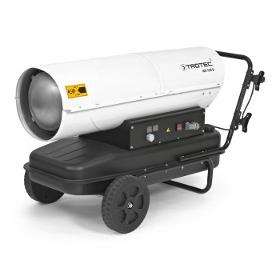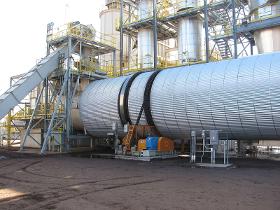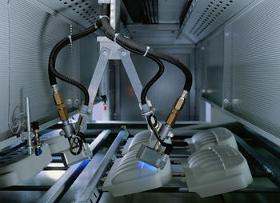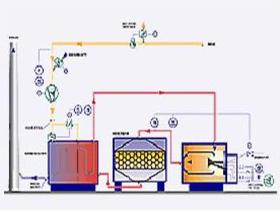- europages
- >
- COMPANIES - SUPPLIERS - SERVICE PROVIDERS
- >
- heating burners
Results for
Heating burners - Import export

TROTEC GMBH
Germany
Whether you want to reliably keep construction zones warm, effectively heat larger halls, protect your livestock from the cold or keep your work material free of ice despite low temperatures: with 100 kW of direct heating power the IDE 100 D provides a high heating capacity for every demand with 100 % efficiency. The integrated oil burner of this heating device can be fuelled by either diesel or fuel oil. The continuous fuel supply to the stainless steel combustion chamber is regulated by means of a high-quality Danfoss® injection pump. Safe operation of the oil heater fan is ensured by an electronic flame trap and an integrated overheating protection. Among the further assets are the easily accessible, external fuel filter as well as the possibility to easily read the remaining fuel volume at the filling level indication integrated in the tank.
Request for a quote
SIEMPELKAMP MASCHINENFABRIK GMBH
Germany
Various heater types available, eciency and robustness characterise directly heated drum dryers by Büttner. They are used for drying wood particles, strands, sugar beet pulp and all free-owing types of wood, biomasses and bulk solids Features Water evaporation capacity of up to 80 t/h depending on the product Direct heating system with multi-fuel burners in combustion chambers Direct heating system using ue gases from energy plants Direct heating system using waste gases from turbines or engines All combinations of these types of heaters are possible. A ash tube may be used for pre-drying and oversize separation of material that is quite moist. Material separation via cyclones or drop boxes Function The material to be dried is admitted through an air-tight rotary air lock into a rotating single-pass drum dryer. The dryer drum can be tted with specic internal ights to suit the material to be dried. This results in an increase in surface area and thus an increase in eciency
Request for a quote
VENJAKOB MASCHINENBAU GMBH & CO KG
Germany
Prior to coating plastic workpieces, they can be flame heated using a gas burner to improve adherence. This is not a heat treatment but rather a selective utilisation of the chemical effect of the gas flame. Naturally, we also offer further pretreatment equipment, such as the plasma treatment for example. During flame heating, the surface is briefly subjected to the direct effect of a gas flame fed with extra oxygen. This causes the breaking of molecular bonds in the surface of the substrate to be treated, and the binding of active ions, mainly OH and COOH groups existing in the flame. In this manner, polar groups, enabling the secure bonding of printing inks, lacquers/paints, adhesives, etc. are created in the originally nonpolar material. Due to the formation of polar groups, the surface energy of the treated substrate increases to a measurable amount.
Request for a quote
VENJAKOB MASCHINENBAU GMBH & CO KG
Germany
Under defined conditions, the catalytic thermal oxidizer (CTO) is an economical alternative for cleaning organic air pollutants (including VOCs). The system has proven to be particularly efficient when handling identifiable and consistent pollutant loads. In general, exhaust gases containing silicon and phosphorous cannot be treated. Under defined conditions, the Catalytic Thermal Oxidizer (CTO) is an economical alternative for cleaning organic air pollutants. The procedure is based upon the fact that under suitable conditions, even low amounts of volatile pollutants can be burnt without producing residue. This process would have required a high amount of heat energy. Therefore a catalyser and a heat exchanger are installed. The tubular heat exchanger installed behind the catalyser uses as much energy from the hot clean gases as possible in order to heat up the cold raw gases. The job of the catalyser is to decrease the amount of energy required to convert the pollutants without being depleted during the reaction. The raw gas loaded with pollutants is then forced into the heat exchangers of the CTO by the process fan. Here the raw gas is pre-heated by the hot clean gas. When required the burner heats up the exhaust gas further in the combustion chamber to the ignition temperature of the catalyser. In the catalyser the pollutants are converted into non-polluting CO2 and H20 vapour. After the catalyser, the clean gas is forced into the heat exchanger tubes. Along the way through the heat exchanger tubes the raw gases is heated and cooled. Eventually the clean gas leaves the system via the clean gas socket.
Request for a quoteDo you sell or make similar products?
Sign up to europages and have your products listed
Results for
Heating burners - Import exportNumber of results
4 ProductsCompany type